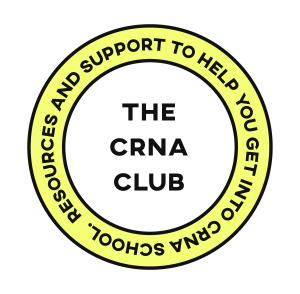Getting into CRNA School is more competitive than ever. Applicants are getting stronger and stronger, and with more resources available to help people get in, the bar is being raised. Now you're in the ICU, contemplating transferring to a different unit so you can give yourself the best chance of getting in on the first try. Or, you’re getting your first ICU job and you’ve got multiple offers, and you don’t want to make the wrong choice.
Let's break down what is the best type of ICU for CRNA school and what types of patients you should be able to say you've taken care of, so your application doesn't get tossed in the reject pile.
Before we get started, we need to break down the definition of critical care as defined by the Council of Accreditation for CRNA programs. The COA sets the standard for CRNA schools across the country, they’re also the accrediting body for CRNA programs so they can stay in business.
According to the Council of Accreditation:
"Critical Care Experience – Critical care experience must be obtained in a critical care area within the United States, its territories or a U.S. military hospital outside of the United States. During this experience, the registered professional nurse has developed critical decision making and psychomotor skills, competency in patient assessment, and the ability to use and interpret advanced monitoring techniques. A critical care area is defined as one where, on a routine basis, the registered professional nurse manages one or more of the following: invasive hemodynamic monitors (such as pulmonary artery catheter, CVP, arterial); cardiac assist devices; mechanical ventilation; and vasoactive infusions. Examples of critical care units may include but are not limited to: Surgical Intensive Care, Cardiothoracic Intensive care, Coronary Intensive Care, Medical Intensive Care, Pediatric Intensive Care, and Neonatal Intensive Care. Those who have experiences in other areas may be considered provided they can demonstrate competence with managing unstable patients, invasive monitoring, ventilators, and critical care pharmacology."
What does this mean?
Each program is going to look at this definition of critical care experience and decide for themselves what types of units they will be willing to accept, pending the criteria is met. One school is going to accept PICU experience while another school will not.
Many programs will sort of leave it open-ended and say, "other areas of critical care may be accepted." What does that mean? They’ll accept specialties not explicitly mentioned, pending you’re a strong applicant. Aka, case by case basis.
What ICUs are traditionally accepted?
- MICU
- CVICU
- CICU
- SICU
At face value, are one of these better than the other? No.
HOWEVER, here’s what really matters.
The acuity.
Let's revisit the definition of critical care as defined by the COA.
If you are taking care of patients who are mechanically ventilated, on vasoactive infusions, have invasive lines, and are receiving life-saving device intervention like CRRT, balloon pumps, or ECMO, you are GOOD.
But what if you’re not working in one of those “traditional” units but you are still getting patients that are high acuity? Well, this may limit you to the number of schools that you can apply to, however, you can still get into CRNA school.
ER? PICU? NICU? Flight Nurse?
Using our CRNA School Database you can quickly find which schools you can apply to, that will accept your specialty experience:
- 15 schools that will accept ER.
- 4 schools that will consider flight nursing
- Quite a few schools accept NICU/PICU
So which ICU is REALLY the best?
An ICU at a Level 1 or Level 2 Trauma center, that cares for patients mechanically ventilated, on vasoactive infusions, with life-saving devices, that sees a variety of pathophysiologies.
Do I think it’s worth it to change from a Level 2 to Level 1 trauma center if the acuity of your patients won’t change much? Nope.
Do I think that if you’re a PICU or NICU (or ER) nurse it’ll be more difficult for you to get in? Not necessarily.
Don't switch, stay where you're at, and make sure you're getting involved in your unit's leadership committees.
Theodore Roosevelt said it best: “Do what you can, with what you have, where you are.”
It's better to be at a Level 2 Trauma center but be heavily involved in leadership roles precepting committees and even trying to get involved in research, then it is to switch to a Level 1 Trauma Center and not have many other extra points on your resume that make you well-rounded.
Yes, it's important that you care for very sick patients. You have to be exposed to patients with multi organ system failure, be able to titrate multiple vasoactive infusions, you have to be exposed to invasive devices and lines. However, that is just one piece of the puzzle.
When you get into CRNA School the playing field is leveled. Within a week of starting, you're going to realize that the classmate sitting next to you with CVICU experience is no further ahead than you are with MICU experience. You both know basically nothing.
So what really matters then? It's your character, your grit, your determination to power through and succeed in one of the most difficult chapters of your life. That is what the admissions committee is looking to figure out. It's what type of person are you.
Ready to find your schools? Check out our CRNA School Database!


